#Northeast Airlines
Photo

#british airways#bea#boac#british european airways#british overseas airways corporation#northeast airlines#cambrian airways#stewardess#air hostess#cabin crew#flight attendant#70's#uniform#fashion#vintage
14 notes
·
View notes
Text
Cheating on Amtrak
Notes on some atypical travel along the Northeast Corridor.
I did something Wednesday that I used to scoff at: I went from Washington to New York via plane, not train. Then I opted for the same mode of travel to get from NYC to Boston, another route on which door-to-door travel times can be shorter by rail than air.
I feel a little dirty about those less-than-green travel choices, but I had my reasons this time.
Cost was foremost among them. Amtrak…

View On WordPress
#Acela#American Airlines#Amtrak#BOS#Boston#LaGuardia#LGA#Moynihan Train Hall#NEC#Newark#Northeast Corridor#Northeast Regional#NYC#Penn Station#train#United Airlines
2 notes
·
View notes
Text
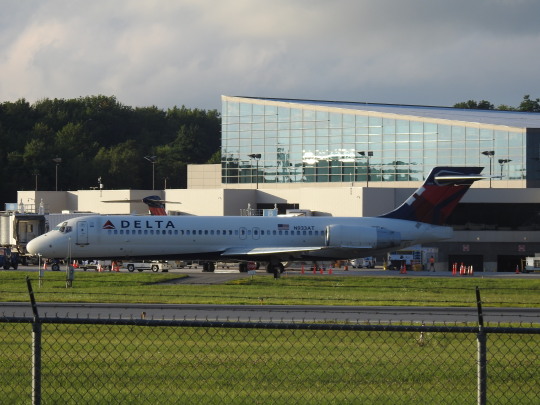






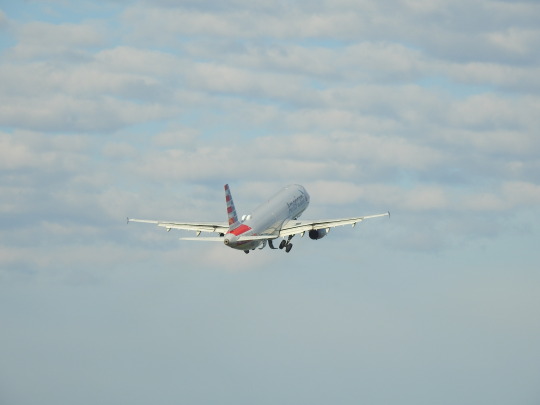

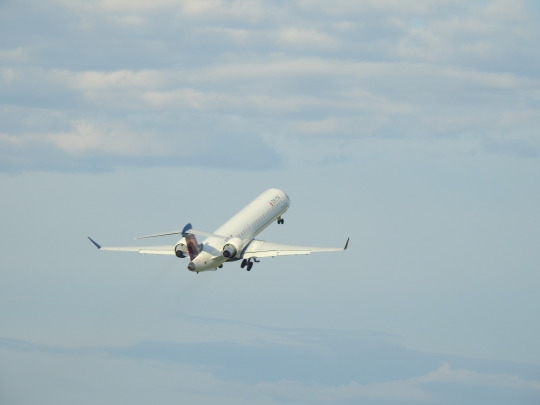

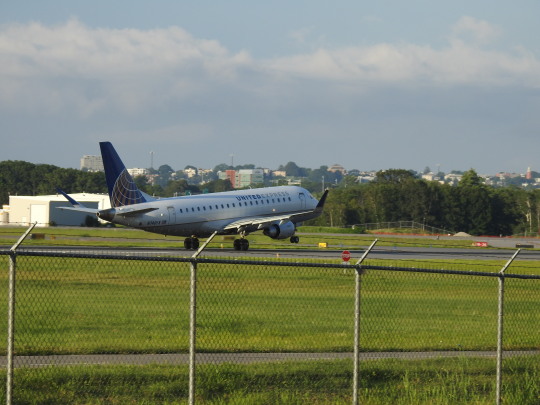
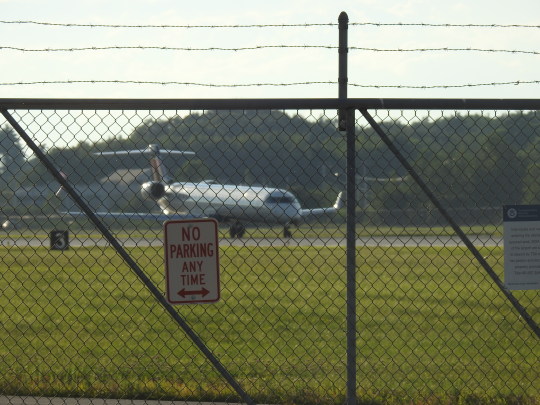
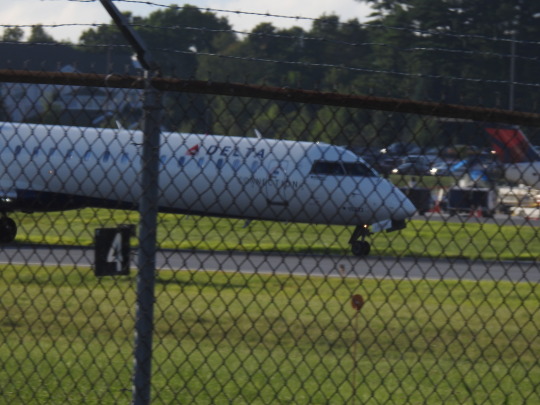





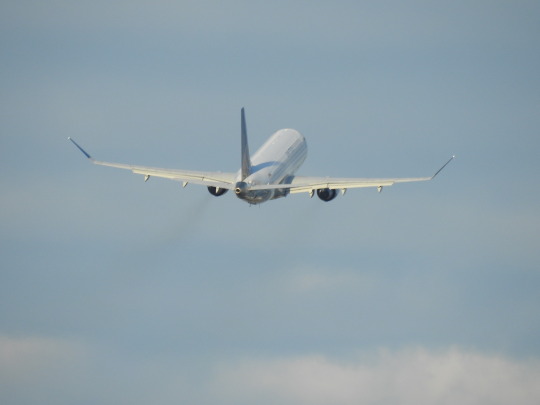

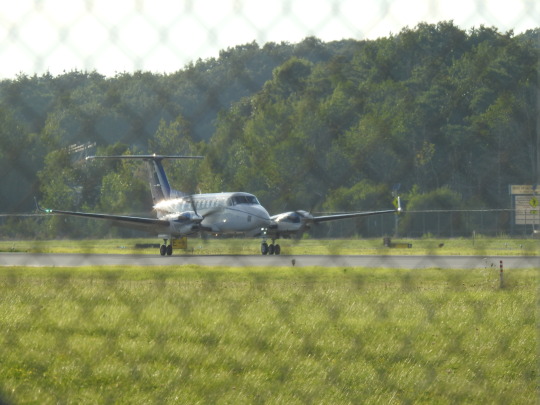

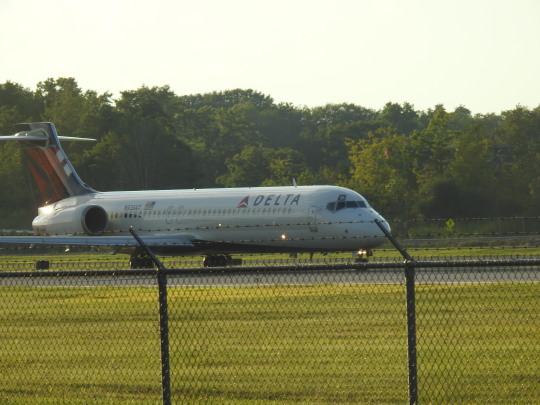

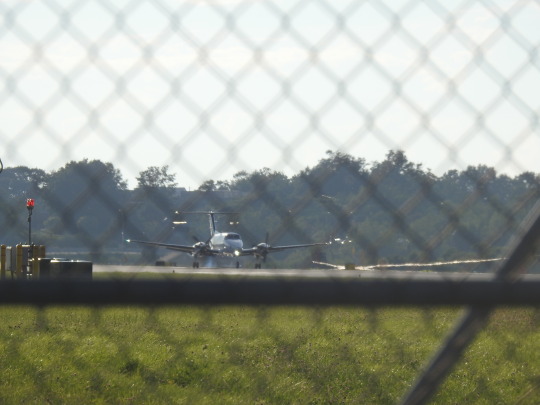




Portland International Jetport
#photography#maine#portland#jet#airplane#aviation#aircraft#aircraft photography#airplane photography#delta#united#private planes#American airlines#airlines#new england#northeast#airport
4 notes
·
View notes
Text
Jan. 1 (UPI) -- A powerful 7.5-magnitude earthquake rocked western Japan on Monday, likely killing two people, as tsunami warnings issued earlier in the day were downgraded to advisories.
The earthquake struck about 26 miles northeast of Anamizu in Ishikawa prefecture, along the Noto Peninsula.
Authorities initially warned that tsunami waves could be as high as 10 feet along the Sea of Japan coast but the Japan Meteorological Agency later downgraded all of the tsunami warnings to advisories.
Japanese Prime Minister Fumio Kishida told reporters emergency personnel are working to assess damage from the earthquake so far.
"In response to the M7 earthquake at Noto region in Ishikawa prefecture, we have immediately set up the Prime Minister's Office of Response, Disaster Counter Measure HQ," he wrote on X.
"Putting human lives as a priority, we are making every effort to assess damages -- putting forth all efforts in disaster response. For those in affected areas, please pay close attention to the latest information and place personal safety as your priority."
The quake shook buildings in central Tokyo, while local police on the peninsula reported two people were found showing no vital signs. The central government also confirmed six separate incidences of residents trapped alive in under collapsed houses in the area.
The earliest waves measured about four feet along the Noto Peninsula and around Ishikawa and Niigata. Some have been identified as far north of the Hokkaido Prefecture.
It marked the first time Japan has issued a major tsunami warning since 2011, when a 9.0-magnitude quake struck Tohoku, causing catastrophic damage from deadly tsunami waves.
Officials suspended bullet train service while Japan Airlines and Nippon Airways canceled all fights in the western region. Western Japan hospitals reported power outages but there were no confirmed numbers of possible injuries from the earthquake so far.
Strong aftershocks, ranging from 4.0 to 5.0 magnitude came in a rapid-fire succession of 21 incidents in central Japan, according to the JMA. The country's nuclear authority said there was "no risk of radioactivity leaking from nuclear power plants" in the affected areas.
Japan sits in the so-called Pacific Ring of Fire, where many tectonic plates meet, causing a constant threat of earthquakes that has led it to develop one of the world's most sophisticated tsunami warning systems.
12 notes
·
View notes
Text
Double-Funeral Week Recap
Frontier is a fucking bus service in the air, but in a pinch it sure is a hell of a lot cheaper than the bigger airlines.
Six volunteers from the front rows had to re-seat towards the back of the plane for rebalancing so we could actually take off. I’ve never experienced that before, and it didn’t exactly inspire confidence.
The woman in front of us would not shut the fuck up the entire flight and I heard her recount her entire life story to an initially-willing seatmate.
(It was surprisingly messy so in retrospect, I kind of live.)
Got halfway through a book I didn’t like.
Andrew’s family rescued an puppy they watched someone abandon on the side of the road. His name is Decker because he’s all black, and my best guess is that he’s some kind of silent chihuahua-black lab mix? I miss him already.
Andrew’s family is massive and he must’ve heard “I haven’t seen you since you were this big!” about a dozen times.
An altar girl passed out (I’m talking full-on Bethesda ragdoll’ed) during the mass, I’m assuming from kneeling for too long. When things resumed the Bishop joked, “the Spirit can slay you in many ways!”
Apparently in the south during Communion, the congregation has the option to drink wine from a shared chalice and the priest wipes it down with a rag in between each person? This does not happen in the northeast, I could not believe what I was seeing.
The deacon who did the graveside reading was a Joe Pesci doppelganger, complete with a Queens accent. I have no idea how this man found himself in coastal Mississippi.
Flying back, two strangers sitting in front of us started a conversation that lasted the entire flight again.
I finished the book I didn’t really like.
My grandmother’s wake took place in a funeral home that I trick-or-treated at back in middle school. I didn’t get candy then, and I didn’t get candy this time.
Multiple people commented unprompted that I looked more muscular, despite the fact that I haven’t lifted since Tuesday before last. Small victories.
Two people that I haven’t seen in over a decade separately remembered that I used to be a decent pianist and asked if I still played. I sheepishly had to admit that I no longer practice to both of them.
The priest at the second funeral had a bizarre tangent during the sermon about an African boy who had a vision from Mary and then got shot in the head during the Rwandan genocide. He then segued with “anyway, I love this story because xyz...” but I couldn’t follow because I hadn’t recovered from the tonal whiplash yet.
Got some delicious seasonal pies at a small farm in the middle of the Pine Barrens.
23 notes
·
View notes
Text
No. 4 - jetBlue
Last time on Runway Runway, I covered all 19 of the things jetBlue paints on the tails of their planes. That post was by nature of its concept so long that I didn’t actually have time to discuss the livery itself. But I can’t just spend such a long time looking at their planes and not do that, can I? Especially not when they’re at least a sixth of the air traffic where I live.
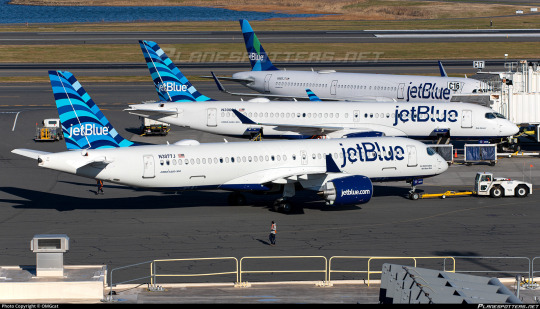
So, enough buildup. Let’s remember that all those tails are attached to the rest of an airframe.
I really like jetBlue. They’re among my favorite airlines to fly with, and they name their planes things that are funny. I live in a jetBlue focus city and it’s fun seeing all their planes with their varied tails and their ridiculous names parked all around like a flock of extremely silly seagulls. There’s just one problem:
I do not particularly like their livery.
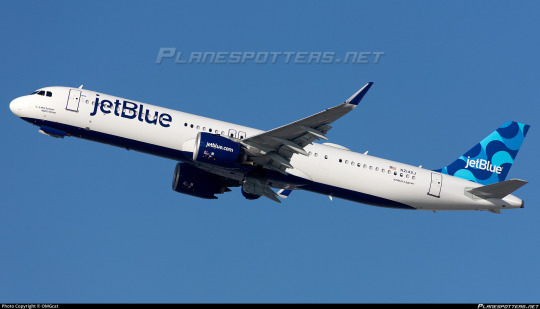
Okay. Here is a jetBlue plane. Relatively normal one. Just picked whichever one I stumbled on first. Painted exactly the same as all their planes have been for the last 23 years. She’s got all the bells and whistles. There’s the billboard logo in a nice legible font with its catchy lowercaseUppercase styling. Text on the tail somehow is the right combination of legible and out of place that it feels like a watermark rather than a part of the livery, but nobody’s perfect. Pleasing combination of blue shades. Ribbon variant of jetBlue’s signature jellybean tails. Definitely an airplane. Doesn’t hurt my eyes to look at.
Mostly white though.

I mean, it could absolutely be worse. Definitely, it could be worse. The fact that there are both light and dark blue shades blends together so if you look from the side you can almost mistake the plane for not being white. It’s still white, though. You can at least see the blue on the belly from the side. It looks clean and intentional. It just...is mostly white with a fully blocked off tail? I don’t know. I feel like maybe the design process was ‘the tails are interesting enough, we should leave the fuselage mostly alone’ but I’m not entirely sure I agree. Yes, it could be overwhelming if the execution was botched, but it could also be better than the way it looks now. You miss 100% of the shots you don’t take. I think Tex Johnston said that.
Oh, huh, there goes N3104J “Roses are Red, This Plane is Blue” flying right past my house as I type this. I had to check on FR24 to know the registration and all that but I could at least tell she was a jetBlue plane because I could see the blue underside and vague blue of the tail. If she were directly above me I don’t think I would be able to tell her apart from the Delta planes that also come here a lot, but jetBlue’s planes are at least somewhat distinctive from the vantage point of someone in the Northeast US. Mission somewhat accomplished?
It’s just...lacking pizzazz and I would expect more from the airline with a plane named “FuhgeddaBlueDit”. At the same time, it does...it’s certainly designed somewhat. It feels less like they just hopped on the bandwagon and more like they made a design they genuinely thought was the best for them and it happened, by pure coincidence, to be the same thing everyone else was doing. Good equation, bad result, if you will. I think, honestly, she is...
Down in the deep blue...C.
Mmm...yep. Seems like that’s it. I’m done here. Unless...oh, oh no. I remember now. I’m not even close to done.
#tarmac fashion week#runwayrunway blueses it#grade: c#region: north america#region: united states#era: 2000s#era: 2010s#era: 2020s#jetblue#low cost carriers#neelemanverse
24 notes
·
View notes
Text
This is what an erupting volcano looks like from space.
📽: NASA Johnson
—
A fortuitous orbit of the International Space Station allowed the astronauts this striking view of Sarychev Volcano (Kuril Islands, northeast from Hokkaido in Japan to Kamchatka Peninsula in Russia) in an early stage of eruption on 12 June 2009.
Sarychev Peak is one of the most active volcanoes in the Kuril Island chain, and it is located on the northwestern end of Matua Island.
Prior to June 12, the last explosive eruption occurred in 1989, with eruptions in 1986, 1976, 1954, and 1946 also producing lava flows.
Ash from the multi-day eruption has been detected 2,407 kilometers east-southeast and 926 kilometers west-northwest of the volcano.
Commercial airline flights are being diverted away from the region to minimize the danger of engine failures from ash intake.
This detailed astronaut photograph is exciting to volcanologists because it captures several phenomena that occur during the earliest stages of an explosive volcanic eruption.
The main column is one of a series of plumes that rose above Matua Island on June 12.
The plume appears to be a combination of brown ash and white steam. The vigorously rising plume gives the steam a bubble-like appearance.
In contrast, the smooth white cloud on top may be water condensation that resulted from rapid rising and cooling of the air mass above the ash column.
This cloud, which meteorologists call a pileus cloud, is probably a transient feature: the eruption plume is starting to punch through.
The structure also indicates that little to no shearing wind was present at the time to disrupt the plume.
(Satellite images acquired 2-3 days after the start of activity illustrate the effect of shearing winds on the spread of the ash plumes across the Pacific Ocean.)
By contrast, a cloud of denser, gray ash — probably a pyroclastic flow — appears to be hugging the ground, descending from the volcano summit.
The rising eruption plume casts a shadow to the northwest of the island.
Brown ash at a lower altitude of the atmosphere spreads out above the ground at image lower left.
Low-level stratus clouds approach Matua Island from the east, wrapping around the lower slopes of the volcano.
Only about 1.5 kilometers of the coastline of Matua Island are visible beneath the clouds and ash.
Credit: NASA Earth Observatory
#volcano#space#NASA#International Space Station#Sarychev Volcano#Sarychev Peak#Matua Island#volcanologist#volcanology#volcanic eruption#meteorologist#pyroclastic flow#Kuril Islands#Japan#Russia
4 notes
·
View notes
Text
WIP Wednesday
As this WIP Wednesday falls on Valentine's Day I thought I'd share my take on Pam and Ellen's first meeting.
I'm still working on this fic but 1. I'm a painfully slow writer, also though I am still finding more things to put into it, so it'll be done when it's done
‘So, what did you do before coming to Houston?’
‘I worked at Cavalier,’ Ellen said, a little guiltily. She had always intended to spread her wings after graduating from MIT but being the eldest child her father put high expectations on her and with so few aerospace companies hiring women she just kind of fell into working in the family firm.
‘What’s Cavalier?’ Pam innocently asked.
‘Cavalier Airlines, you’ve not heard of it?’
Pam shook her head and Ellen supposed that made sense, her father’s airline business mainly served the Northeast. Coming out west she was just ‘Ellen’. Joining NASA was not just an opportunity to explore the universe but her chance to get out of her family’s shadow.
Pam drew herself closer to Ellen, so close she noticed her chest tighten, her heart beating faster. She noticed her cherry lip gloss and her cheeks redden. She looked into her deep hazel-eyes and asked in a low whisper, ‘Can you keep a secret?’
‘Sure,’ Ellen said, looking into Pam’s eyes, blue as the Earth itself.
‘Don’t dare tell anyone at NASA, but I’ve never flown on a plane before.’
‘Really?’
‘Nope. Tell you the truth, I’ve never even left the state.’
‘That’s okay, I’ve never left Earth before but I’ve already started planning my vacation,’ she said. It was a lame joke and Ellen knew it but Pam still smiled anyway and from that moment Ellen knew that she wanted spend the rest of her life trying to make this beautiful woman smile.
Looking at each other, it was as if time and space fell away. They could forgot they were in a shithole of a bar, in a world that didn’t accept them. It was just the two of them.
The illusion was sadly and inevitably broken by one of Outpost’s loud and invariably male, patrons demanding another beer. As Pam served the customer, Ellen looked behind her to see that her compatriots had thinned out since she had gotten talking to Pam.
‘What does it feel like to fly?’ Pam said, returning to her spot behind the bar opposite Ellen.
‘It’s like nothing else, like there’s nothing stopping you, you’re just free.’
‘Sounds nice.’
‘Well you could always come for a ride with me?’
‘You mean…?’
‘I mean, I could rent a Cessna for us, there are enough private airfields about in Houston. We could go out to Galveston… that’s if you wanted to.’
‘I don’t know, I might need half the contents of this bar to give me enough dutch courage to consider taking to the skies. But thanks for the offer, it’s really sweet.’
6 notes
·
View notes
Text
Nightmare summer travel is upon us as vacation season coincides with high temperatures and severe weather capable of disrupting flights. By Wednesday of this week, FlightAware, a site that follows air traffic around the world, had tallied some 30,000 delays and between 900 and 1,400 cancellations per day. In the US, more severe weather is expected in the Southwest, as scorching temperatures are forecast to reach above 115 degrees Fahrenheit in some areas, and thunderstorms are forecast for the Northeast.
The airline industry has a disproportionate effect on the climate; flying is a carbon-intense activity, responsible for 2 to 3 percent of the globe’s energy-related CO2 emissions. But it’s also vulnerable to the effects of higher temperatures and changing weather patterns. Hot weather causes obvious problems for aviation: It makes working conditions on tarmacs unbearable, and wildfire smoke reduces visibility. But there are also some surprising effects of a changing climate on flights, like more turbulence, problems with takeoffs, and more frequent and severe storms that can lead to delayed or canceled flights.
Individual storms or heat waves aren’t necessarily linkable to climate change, but the overall trends of a warming world will test aviation. “There are problems—and will be problems in the future—due to climate change,” says John Knox, a professor of geography at the University of Georgia.
First, there are the immediate effects of sudden heat waves themselves. Last summer, a heat wave in the United Kingdom damaged runway infrastructure and led to delays. As an extreme example of what heat can do, in 2012 high temperatures melted the tarmac at Ronald Reagan Washington National Airport, trapping a plane when its wheel became stuck.
More heat in the atmosphere means that the air holds more moisture, making thunderstorms more likely. United Airlines CEO Scott Kirby warned this week that more thunderstorms from warmer temperatures will bring more delays.
Climate change is also linked to increasingly severe fire seasons. This year’s rocky start to July comes after a bad June, when wildfires from Canada sent smoke that engulfed the East Coast and the Midwest and affected flights. Wildfire smoke does more than reduce visibility—it affects a plane’s advanced navigation systems. These are designed well to work through rain and fog, but particulate matter from smoke and ash are more disruptive. To respond to these conditions, the US Federal Aviation Administration shifts air traffic, creating more distance between planes as they land.
But there are more complicated, invisible effects of a warming world too. Hotter air is trapped near the ground, and cooler air above. Shifts in temperature gradients affect the wind shear, or the changes in speed and direction between air near the ground and at higher elevations. These eddies create clear air turbulence, which occurs in the absence of clouds. Light turbulence can cause sudden changes in altitude that feel like bumps, but severe turbulence can cause structural stress to the aircraft.
Turbulence isn’t just unpleasant. It’s the cause of more than one third of injuries aboard air carriers, according to the US National Transportation Safety Board, and in rare instances can even lead to death.
Changing wind patterns may also alter flight lengths. If, for example, there are stronger eastward winds, flights from the US to Europe will speed up, but flights in the other direction may take longer. Transatlantic flights may even need to reroute and refuel.
Research from Paul Williams, a professor of atmospheric science at the University of Reading in the UK, found that jet stream changes could increase the amount of time flights are in the sky each day, leading to more fuel burning, higher costs, and more CO2 emissions. Jet streams are high-altitude air currents that drive weather systems. As the Arctic warms, the North Atlantic Jet Stream is changing, leading to more odd weather.
But heat alone can also lead to delays and cancellations, like when a 119-degree day in Phoenix grounded planes in 2017. That’s because high temperatures decrease air density. When the air is less dense, planes need more time and distance to fight gravity as they take off—so they may need a longer runway to become airborne. Not all airports can accommodate these sudden changes.
Passengers are feeling the effects, but this isn’t new or surprising to the aviation industry, which has grappled with sustainability issues for decades, says Rob Britton, a former American Airlines executive and a professor of marketing at Georgetown University.
The industry has taken strides to make flying more efficient, but significantly reducing delays and cancellations will depend on designing aircraft that can withstand new environmental challenges and updating aviation infrastructure. It’s a plan that requires cooperation from the FAA, airlines, and manufacturers. “These are not solutions that happen quickly,” Britton says.
Despite the drawbacks, people want to fly. The US Transportation Security Administration expected a record number of passengers to board planes this summer. Combine the travel boom with heat waves, worker strikes in Europe, and staffing issues in the US, and these headaches aren’t likely to end soon.
5 notes
·
View notes
Photo

The Aquarium Drunkard Show: SIRIUS/XMU (7pm PST, Channel 35)
Via satellite, transmitting from northeast Los Angeles — the Aquarium Drunkard Show on SIRIUS/XMU, channel 35. 7pm California time, Wednesdays.
Intro ++ Robert Wyatt – Heaps Of Sheeps ++ Brian Eno – Burning Airlines Give You So Much More ++ Agitation Free – Laila, Pt. 1 ++ A.R. & The Machines – Station 2: Ice Bin Dein Sänger, Du Bist Mein Lied ++ Amon Düül – A Morning Excuse ++ Amon Düül II – Wie Der Wind Am Ende Einer Strasse ++ Popol Buh – King Minos II ++ Captain Beefheart & His Magic Band – Where There’s Woman ++ PAINT – Rokc Muzik ++ Harmonia & Eno ’76 – Vamos Campaneros ++ Brian Eno & David Byrne – Regiment ++ Wire – Practice Makes Perfect ++ Television – Marquee Moon ++ Faust – Just A Second (Starts Like That!) ++ Big Star – Kanga Roo ++ Cola – At Pace ++ Television – Glory ++ The Durutti Column – Sketch For Summer ++ Tobacco – Yum Yum Cult ++ Bondo – Compressed Drum ++ Fugazi – Lusty Scripps ++ Brian Eno – Third Uncle ++ Sagittaire – Desert Shore ++ Aphrodite’s Child – Loud, Loud, Loud ++ CAN – Future Days ++ Kevin Ayers – Decadence ++ Soft Machine – Pataphysical Introduction, Pt. I >> A Concise British Alphabet, Pt. II >> As Long As He Lies Perfectly Still ++ The Pretty Things – Baron Saturday ++ John Lennon – I Don’t Wanna Be A Soldier Mama I Don’t Wanna Die (Take 21 Raw Studio Mix)
Only the good shit. Aquarium Drunkard is powered by its patrons. Keep the servers humming and help us continue doing it by pledging your support via our Patreon page.
12 notes
·
View notes
Text

Boeing 777-200ER British Airways
Registration: G-YMMT
Type: 777-236ER
Engines: 2 × RR Trent 895
Serial Number: 36518
First flight: Jun 5, 2009
British Airways is the flag carrier airline of the United Kingdom and the largest airline in the United Kingdom. The airline is based in Waterside near its main hub at London Heathrow Airport. A British Airways Board was established by the United Kingdom government in 1972 to manage the two nationalised airline corporations, British Overseas Airways Corporation and British European Airways, and two smaller Cambrian Airways, and Northeast Airlines. On 31 March 1974, all four companies were merged to form British Airways. The centrepiece of the airline's long-haul fleet is the Boeing 777. British Airways is a founding member of the Oneworld airline alliance.
Poster for Aviators.
aviaposter.com
#aviation#avgeek#plane#aircraft#airplane#posterjetavia#aviaposter#tripleseven#b777lovers#oneworldalliance#boeingaircraft#boeingpilot#aviationlovers#pilot#airtransport
12 notes
·
View notes
Text
I Can Never Forget
September 11, 2001:
I was 6 going on 7 years old. It was a bright and sunny Tuesday morning. I was in kindergarten. I remember it all vividly. It seemed like a regular Tuesday morning, but little did any of us know....it was going to be for from normal.
7:59 AM – Flight 11
takes off from Boston, headed for Los Angeles, California. There are 76 passengers, 11 crew members, and 5 hijackers on board.
8:15 AM – United Airlines Flight 175
takes off from Boston, also headed for Los Angeles. There are 51 passengers, 9 crew members, and 5 hijackers on board.
8:19 AM
A flight attendant on Flight 11, Betty Ann Ong, alerts ground personnel that a hijacking is underway and that the cockpit is unreachable.
8:20 AM – American Airlines Flight 77
takes off from Dulles, outside of Washington, DC, headed for Los Angeles. There are 53 passengers, 6 crew members, and 5 hijackers on board.
8:24 AM
Mohamed Atta, a hijacker on Flight 11, unintentionally alerts air controllers in Boston to the attack. He meant to press the button that allowed him to talk to the passengers on his flight.
8:37 AM
After hearing the broadcast from Atta on Flight 11, Boston air traffic control alerts the US Air Force’s Northeast Defense Sector, who then mobilizes the Air National Guard to follow the plane.
8:42 AM – United Flight 93
takes off from Newark, New Jersey, after a delay due to routine traffic. It was headed for San Francisco, California. There are 33 passengers, 7 crew members, and 4 hijackers are on board.
8:46 AM – Flight 11
crashes into the World Trade Center’s North Tower. All passengers aboard are instantly killed, and employees of the WTC are trapped above the 91st floor.
9:03 AM – Flight 175
crashes into the WTC’s South Tower. All passengers aboard are killed instantly, and so are an unknown number of people in the tower.
9:05 AM
President George W. Bush, in an elementary school classroom in Florida, is informed about the hit on the second tower. His chief of staff, Andrew Card, whispers the chilling news into the president’s ear. Bush later wrote about his response: “I made the decision not to jump up immediately and leave the classroom. I didn’t want to rattle the kids. I wanted to project a sense of calm… I had been in enough crises to know that the first thing the leader has to do is to project calm.”
9:28 AM
Hijackers attack on Flight 93.
9:37 AM – Flight 77
crashes into the Pentagon. All passengers aboard are instantly killed, and so are 125 civilian and military personnel in the building.
9:45 AM
US airspace is shut down under Operation Yellow Ribbon. All civilian aircraft are ordered to land at the nearest airport.
9:55 AM – Air Force One
with President George W. Bush aboard takes off from Florida.
9:57 AM
Passengers aboard Flight 93 begin to run up toward the cockpit. Jarrah, the pilot, begins to roll the plane back and forth in an attempt to destabilize the revolt.
9:59 AM
The South Tower of the World Trade Center collapses.
10:02 AM – Flight 93
plows into an empty field in Shanksville, Pennsylvania. Although its ultimate target is unknown, it was likely heading for either the White House or the US Capitol.
10:18 AM
President Bush authorizes any non-grounded planes to be shot down. At that time, all four hijacked planes had already crashed, but the president’s team was operating under the impression that Flight 93 was still in the air.
10:28 AM
The North Tower of the World Trade Center collapses.
10:53 AM
Secretary of Defense Donald Rumsfeld orders the US military to move to a higher state of alert, going to DEFCON 3.
11:45 AM – Air Force 1
lands at Barksdale Air Force Base near Shreveport, Louisiana.
12:15 PM
Airspace in the United States is completely free of all commercial and private flights.
1:30 PM – Air Force 1
Leaves Barksdale
2:30 PM
Rudy Giuliani, the mayor of New York City, visits the fallen Twin Towers of the World Trade Center at what becomes known as Ground Zero.
3:00 PM – Air Force 1
lands at Offutt Air Force Base in Nebraska, and President Bush is immediately taken to a secure bunker that is capable of withstanding a nuclear attack.
4:30 PM – Air Force 1
leaves Offutt and heads back toward Andrews Air Force base near Washington, DC.
5:30 PM
Building 7 of the World Trade Center collapses.
8:30 PM
President Bush addresses the nation
A Word from Lux
9/11 is an emotionally draining day for me. I was in kindergarten when it happened, and I lost a friend in the attacks. She and her family had moved to NYC for her dad's job. I usually don't remember a lot from my childhood or elementary school, but I remember everything vividly like it was yesterday.
If I seem off my game or not myself, I do apologize. Just ever since that day when the anniversary came around, I became an emotional mess with so many different thoughts. I was 6 going on 7 and can still see Mrs. Amy's scared expression when she and Mrs. Penny was watching the TV screens of the airing of the WTC. I remember we went on full lockdown, and Mr. Dexeaux announcing that the US was under a terrorist attack. Nobody was allowed to leave. Parents couldn't check their kids out of school. Nobody was allowed on or off property. Kids couldn't go into the hallways. We couldn't have recess. We had these shitty bagged lunches of ham and cheese hoagies. Ms. K was scared shitless and didn't know what to say or do.
I remember when I finally got home, and mom tried asking me if I understood what happened. I was too little to comprehend. I didn't know how to process anything of what happened that day. I just remember everyone being scared and holding back tears.
That same day, I spoke to my god brother. Bush had declared war on terrorism and Dominick was deployed 3 times during Project Iraqi Freedom and the war on terrorism. He went to Felujah, Baghdad, and Afghanistan. It was a mess.
I just hate that I relive the memories from kindergarten when it all happened. I hate that I see it all so vividly. When I think back to it, I go back into that state of panic that I didn't understand back then. It all comes flooding back every year. Every year, it feels like it happened yesterday.


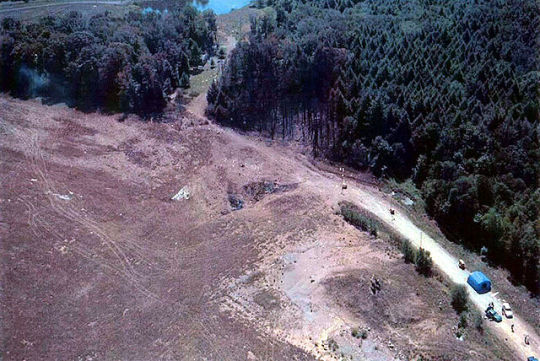

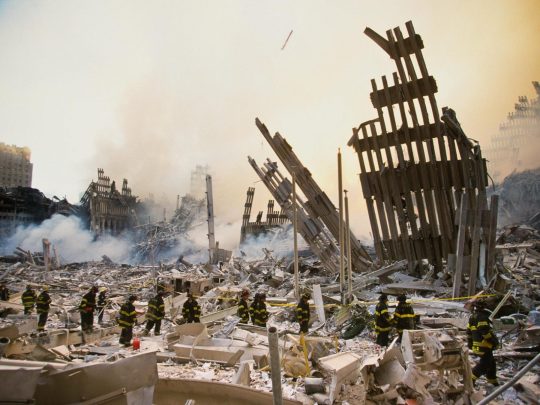

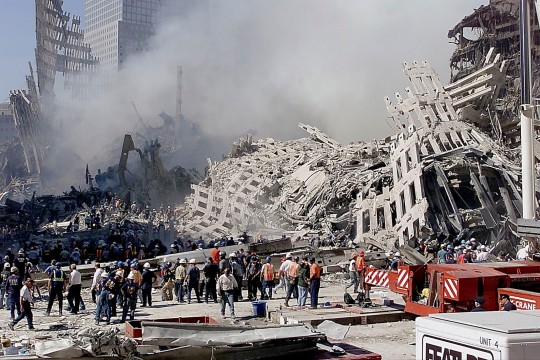
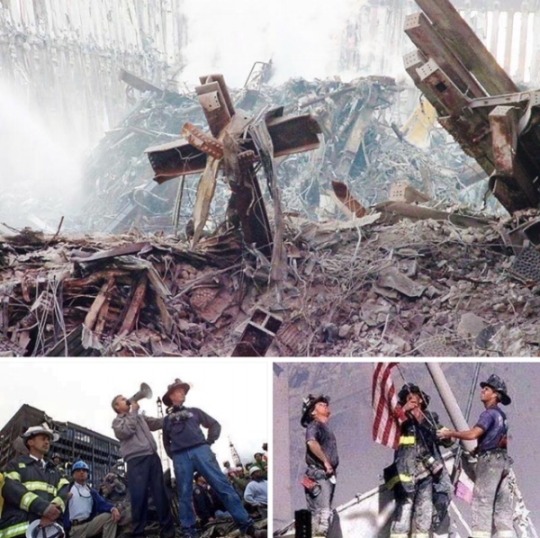

4 notes
·
View notes
Text
Monday, July 17, 2023
Canadian Politicians Who Criticize China Become Its Targets
(NYT) The polls predicted a re-election victory, maybe even a landslide. But a couple of weeks before the vote, Kenny Chiu, a member of Canada’s Parliament and a critic of China’s human rights record, was panicking. Something had flipped among the ethnic Chinese voters in his British Columbia district. Longtime supporters originally from mainland China were not returning his calls. Volunteers reported icy greetings at formerly friendly homes. Chinese-language news outlets stopped covering him. And he was facing an onslaught of attacks—from untraceable sources—on the local community’s most popular social networking app, the Chinese-owned WeChat. Mr. Chiu and several other elected officials critical of Beijing were targets of a Chinese state that has increasingly exerted its influence over Chinese diaspora communities worldwide as part of an aggressive campaign to expand its global reach, according to current and former elected officials, Canadian intelligence officials and experts on Chinese state disinformation campaigns. Canada recently expelled a Chinese diplomat accused of conspiring to intimidate a lawmaker from the Toronto area, Michael Chong, after he successfully led efforts in Parliament to label China’s treatment of its Uyghur Muslim community a genocide. Canada’s intelligence agency has warned at least a half-dozen current and former elected officials that they have been targeted by Beijing, including Jenny Kwan, a lawmaker from Vancouver and a critic of Beijing’s policies in Hong Kong.
Heavy rains swamp Northeast again as flash flooding claims at least 5 lives in Pennsylvania
(AP) Heavy rains pounded an already saturated Northeast on Sunday for the second time in a week, spurring another round of flash flooding, cancelled airline flights and power outages. In Pennsylvania, a sudden flash flood late Saturday afternoon claimed at least five lives. Other parts of the East Coast were experiencing heavy rain, including Vermont. Authorities there said landslides could become a problem Sunday as the state copes with more rain following days of flooding.
San Francisco’s downtown is a wake-up call for other cities
(AP) Jack Mogannam, manager of Sam’s Cable Car Lounge in downtown San Francisco, relishes the days when his bar stayed open past midnight every night, welcoming crowds that jostled on the streets, bar hopped, window browsed or just took in the night air. He’s had to drastically curtail those hours because of diminished foot traffic, and business is down 30%. Empty storefronts dot the streets. Large “going out of business” signs hang in windows. Shampoo, toothpaste and other toiletries are locked up at downtown pharmacies. And armed robbers recently hit a Gucci store in broad daylight. San Francisco has become the prime example of what downtowns shouldn’t look like: vacant, crime-ridden and in various stages of decay. But in truth, it’s just one of many cities across the U.S. whose downtowns are reckoning with a post-pandemic wake-up call: diversify or die. As the pandemic bore down in early 2020, it drove people out of city centers and boosted shopping and dining in residential neighborhoods and nearby suburbs as workers stayed closer to home. Those habits seem poised to stay. Data bears out that San Francisco’s downtown is having a harder time than most. A study of 63 North American downtowns by the University of Toronto ranked the city dead last in a return to pre-pandemic activity, garnering only 32% of its 2019 traffic.
Europe sizzles under heat wave
(AP) Scorching temperatures across Europe forced the closure of the Acropolis in Athens for a second day as officials warned Saturday of even hotter weather next week, when the mercury is forecast to top 40 degrees Celsius (104 degrees Fahrenheit) in several popular Mediterranean tourist destinations. In cities, those venturing out at all drenched themselves in fountains while others sought out pools, the sea or shade in hopes of relief from the heat wave caused by Cerberus. The high-pressure anticyclone coming from the south was named after the three-headed dog in ancient Greek mythology who guarded the gates to the underworld. Fifteen cities in Italy, most of them in the country’s center and south, were under heat advisories signaling a high level of risk for older adults, the infirm, infants and other vulnerable people. In Greece’s capital, where the temperature was forecast to reach 41 C (105.8 F), officials decided to keep the sun-baked Acropolis monument closed from noon to 5:30 p.m. as they did Friday. In Turkey, coastal cities in the south and southwest reached the high 30s (about 97-102 F) and low 40s (104-109 F).
La Palma wildfire
(AP) More than 4,000 people were evacuated as a wildfire rages “out of control” on La Palma in Spain’s Canary Islands on Saturday, destroying around a dozen homes, authorities said. The blaze has affected an area of about 4,500 hectares (11,000 acres) and officials warned residents that the situation could worsen because a heat wave has made the terrain tinder-dry. “The fire has spread very fast,” Canary Islands regional president Fernando Clavijo said. “The fire is out of control.” Spain saw record high temperatures in 2022 and this spring as it endures a prolonged drought. Authorities and forestry experts are concerned that the conditions are ripe for a difficult wildfire campaign after seeing virulent fires as early as March.
Small, Hidden and Deadly: Mines Stymie Ukraine’s Counteroffensive
(NYT) It was a grisly scene of bloody limbs and crumpled vehicles as a series of Russian mines exploded across a field in southern Ukraine. One Ukrainian soldier stepped on a mine and tumbled onto the grass in the buffer zone between the two armies. Nearby lay other Ukrainian troops, their legs in tourniquets, waiting for medical evacuation, according to videos posted online and the accounts of several soldiers involved. Soon, an armored vehicle arrived to rescue them. A medic jumped out to treat the wounded and knelt on ground he deemed safe—only to trigger another mine with his knee. Five weeks into a counteroffensive that even Ukrainian officials say is off to a halting start, interviews with commanders and soldiers fighting along the front indicate the slow progress comes down to one major problem: land mines. The fields Ukrainian forces must cross are littered with dozens of types of mines—made of plastic and metal, shaped like tins of chewing tobacco or soda cans, and with colorful names like “the witch” and “the leaf.” Ukraine’s army is also hindered by a lack of air support and the deep network of defensive structures the Russians have built. But it is the vast array of mines, trip wires, booby traps and improvised explosive devices that has Ukrainian forces bogged down only a few miles from where they started.
For Ukrainians isolated by war, English lessons offer a lifeline
(Washington Post) The Ukrainians logged on in the dizzying days after Russian troops surged across the border. They logged on by candlelight after rocket attacks knocked electricity offline. They logged on as air raid sirens warned of danger. And so it was again one recent day, that 15-year-old Jane Gerasimchuk logged on to Zoom from her home in Dnipro, about 60 miles from the front lines of Russian’s invasion of Ukraine, so she could practice speaking English with a volunteer in Maryland. The call is part of a program called Speaking English Language Overseas or SELO—which sounds similar to the Ukrainian word for village—that pairs English tutors with groups of Ukrainians in the countryside who might not otherwise have a chance to hone their language skills with a native speaker. But what started as online language classes have become much more amid the deprivations and depravities of war—an escape, a lifeline to the outside world, a therapy session and an unusual window into the lives of ordinary Ukrainians at a time when simply carrying on with day-to-day activities has become an act of bravery. “When the bombs started, it was really hard to deal with what was going on,” Jane said in an interview. “I decided even if there was war, I would get better and I will grow.”
India’s favorite girl never grows up. But her wit is less welcome.
(Washington Post) Nearly two decades after India’s independence, a little-known cooperative of small town dairy farmers in 1966 launched what became the most successful advertising campaign in the country’s history and helped transform India into the world’s largest producer of dairy and dairy products. The economic business model developed by Amul, the dairy cooperative, spread throughout India as did its cartoon advertising mascot: a young girl with blue hair, a polka dot dress and an endless stream of witty one-liners commenting on the events of the day. The girl quickly became India’s most recognizable cartoon character, a cultural icon that spared no public figure. But more than 8,000 ads later, she has had to tread carefully in a new India, within the shrinking space to poke—even in jest—at politics. “From then to now is a story of how India has changed—in terms of tolerance, humor, in terms of regime, in terms of what we can do,” said Rahul daCunha, who took over his father’s advertising agency and the Amul butter portfolio in 1993. “My dad was courageous. He never stayed away from a topic. Today, I don’t have that luxury.”
Antarctic ice levels undergo ‘massive decrease’, data shows
(Reuters) Antarctic sea ice levels reached record lows last month, the World Meteorological Organization (WMO) said on Monday, a development climate change experts described as worrisome. WMO said that Antarctic sea ice levels last month—the hottest June ever recorded—were at their lowest since satellite observations began, at 17% below average. “We’re used to seeing these big reductions in sea ice in the Arctic, but not in the Antarctic. This is a massive decrease,” Michael Sparrow, Chief of World Climate Research Programme, told reporters in Geneva.
2 notes
·
View notes
Text

Boston, Massachusetts
1971
Northeast Airlines Yellowbird
Logan Airport
Photograph by Nick DeWolf
https://www.flickr.com/photos/dboo/430627941
#photography #film #35mm #color #boston #loganairport #airport #tarmac #airplane #jet #boeing727 #yellowbird #1970s
4 notes
·
View notes
Text
Vancouver and Chilliwack April 2003
22 - 24 April 2003
Hi everyone! This weekend 20 years ago, I visited Vancouver, BC, Canada, for the second time. I spent two nights in Vancouver's Davie district, sort of west of downtown Vancouver. It was also the first time I rented a car on my own, in a foreign country.
Salut à tout le monde! Ce week-end, il y a 20 ans, j'ai visité Vancouver, BC, Canada, pour la deuxième fois. J'ai passé deux nuits dans le quartier Davie de Vancouver, un peu à l'ouest du centre-ville de Vancouver. C'était aussi la première fois que je louais une voiture par moi-même, dans un pays étranger.
I flew on Friday 22nd April from SFO airport's Terminal 3 by United Airlines. I had booked a first class seat with a 500 mile coupon. The flight took off about 5 PM nonstop to Vancouver. I think I arrived about 8 PM. When I landed, it was in the US terminal where prechecks going back take place. I had to go through Canadian customs. They asked their nosy questions similar to the last time I was there, April 2002. I was admitted into Canada, then I went to baggage claim and retrieved my suitcase. I went through the "Nothing to declare" green lane.
Once I retrieved my suitcase, I went to the Hertz car rental desk. They had my car ready. It was a 2003 Oldsmobile Alero (in Europe this was sold as the Chevrolet Alero). This one had a 3.4 liter V6 engine, 4 speed automatic transmission, and an AM/FM/CD player radio. I did not really need a map for the most part, as I had been to the youth hostel on Thurlow and Burnaby Streets once before. Parking it would be a challenge, but the hospital nearby had parking.
I drove up Grant McConachie Way to Granville Street. After Granville Island, BC route 99 split off into Howe and Seymour Streets. I went northeast on Seymour Street, to Davie Street and turned left. I went to Thurlow Street and turned left, then turned onto Burnaby Street. Back then, there was no plan to build what is known as the Canada Line. I noticed that some of the signals, that had flashing green signals, which meant mainly the same thing as a steady green. When the light was to change, there would be four seconds of steady green before the light went yellow. When the red cycle was over, the light would flash green again and repeat the cycle as necessary. That is something that happens in British Columbia, I have not seen that in other provinces in Canada.
I checked into the hostel, and deposited my bags in my room. I had a single room, right next to the elevator. My room was not ensuite, there was a shared bathroom down the hall. I had to park the car at St. Paul's Hospital. The car park allowed long term parking, so it was okay to park there overnight. Parking in Vancouver is much more difficult that most cities in the USA. I think it was about $20 US to park for two nights. Once I parked the car, I walked to Thurlow Street, then Davie, and to Bute Street. I remembered Hamburger Mary's (now it is called Mary's on Davie), so I went there. I thought about going to Denny's but I passed on that. In Canada, the apostrophe of Denny's is the red maple leaf. McDonald's has something similar in its corporate logo, with a red leaf in the center. I ordered a large hamburger but was unable to eat it all for some reason. I left enough fries as well. The waiter gave me a hinge container, I think a 9 by 6 by 3 inches (22 by 15 by 8 cm) and I took my food to the hostel. The hostel had a communal walk-in refrigerator, and they provided a permanent marker to mark whose food belonged to whom, and what their checkout date was. If there was food in the refrigerator and the guest had already checked out, it was put on a special rack for "free food". The hostel did not provide breakfast back then, so people had to cook their own. After I went to my room, I went to sleep. It was not high season, so it was fairly easy to fall asleep.
On Saturday 23rd April, I woke up, took a shower, went down to the kitchen to collect my hamburger and fries, then walked to the hospital to get the car. I stopped at a Blenz coffee shop, to get some coffee. Blenz is a coffee chain in British Columbia similar to Starbuck's, has few, if any, locations outside of British Columbia. I drove along Davie Street to Denman Street, up BC route 99 to Stanley Park Drive and the totem poles. The previous year, 2002, I had visited the Indigenous Art Museum at University of British Columbia where they had a massive collection of totem poles. The ones at Stanley Park were okay, not particularly spectactular. I liked the view of the Vancouver skyline better. I was able to see Canada Place across the harbor. The weather was nice then. I bought a few gifts for my family at the gift shop. I finished my hamburger, fries and coffee before driving onwards.
After leaving Stanley Park on the north side of the island, I went north on the Lions Gate Bridge to North Vancouver. I ended up in the Capilano Indian Reserve. I turned right on Marine Drive and drove east on Third Street and eventually Main Street. I crossed back into Vancouver by the Trans Canada Highway route 1 which went through Burnaby and Abbotsford. The speed limit was 100 km/h. All highway distances were in metric. After Abbotsford, the speed limit increased to 110 km/h. I planned to go only as far as Chilliwack. Chilliwack was named from the indigenous word Ts'elxweyeqw. The highway was very nice. I played a CD in the CD player. It was mostly of music I had recorded from November 2002, including a few German songs. It felt odd to play German music in Canada.
Once I arrived in Chilliwack, it looked very similar to a small town in the USA, with the main difference being, instead of the Stars and Stripes, it was two red rectangles, and a big red maple leaf on top of the white rectangle. I stopped at the McDonald's on Luckakuck Way, and ordered a hamburger and a small Coke. The hamburger tasted just like the ones I had in the USA. I drove to downtown Chilliwack and wanted to see the murals. One of them stood out to me and it was the decades from 1930 to 1990 or so.
About 2 PM, I drove west on the Trans Canada highway to Vancouver, turning off at Hastings and driving on to St. Paul's Hospital to park again. I walked to the hostel and asked for a day pass. They sold me one for $8.00. I went to the Shoppers Drug Mart, nearby and bought a 2 liter bottle of Sprite Ice. Sprite Ice is basically Sprite with mint flavoring. I rode on the line 6 to Seymour Street, transferred to the line 4 or line 7, and went to the Granville Skytrain station. Back then, Skytrain did not have fare gates. Skytrain stations Granville and Burrard, both have the eastbound platform on the lower level and westbound platform at the upper level. I took the Skytrain to Gastown, which would require a walk from the Waterfront station. I walked a few blocks along Water Street to the whistling steam clock. I watched the clock strike 3 PM. I wish at the time, that I had a working video camera. That would not happen until a year later.
I walked to the Victory Square Cenotaph at Victory Square, and drank some of the Sprite Ice from the bottle that I had in my bag. I walked down Cambie Street and BC route 1A to the Stadium-Chinatown Skytrain station. I took the Millenium Line to Loughheed Town Center. I remember the Millenium line only went as far as Braid, but on 31st August, the line was expanded to Commercial/Broadway. I spent about an hour in the Town Center. It was not much more different than the average shopping mall in the USA.
Due to its location, it was hard to accurately keep track of time, and the sun set later than in California. I took the Skytrain from Loughheed Town Center to Granville, took a bus to Robson Street and then fou a place to eat for supper. It was a Japanese curry restaurant. I ordered a donkatsu curry with udon noodles. It tasted excellent. I had a bubble tea, I think, matcha flavored. Then I walked back to the hostel.
When I was at the hostel, I took my radio and recorded some music. The radio I had was not the Aiwa HS-JS 479 that I brought the previous year, but it was a portable one with digital tuning and 2 inch / 5 cm speakers. Its cassette playback had the "Q-Sound" function to play prerecorded cassettes. I recorded some French and also some English programming. On one of the French stations, I recorded "Tous les palmiers" by the Quebec band Beau Dommage, and "Un homme et une femme" by some unknown duo, definitely not the original ones from the 1960s, definitely not Mireille Mathieu either. I went to bed soon after that.
Sunday the 24th April, I had to wake up and get breakfast. I had a coffee and pastry at Blenz Coffee on Davie Street. Then I checked out of the hostel, took my luggage to the car, and drove south on Granville Road to the airport. However there was one problem. I needed to fill up the tank, and I was not able to find a reliable gas station. I had to drive to Richmond, just a little south of the airport, to find some place that sold gas. Gas in Canada is more expensive than it is in the USA, and is sold by the liter. I drove along Number 2 Road, then Francis Road to Number 1 Road and found a Petro Canada station. I put in about 20 liters, which was not bad for a V6 and maybe 200 km of driving. I drove back to the airport and checked in the car. I noticed a few totem poles before going into the airport terminal.
Checking into my flight to Seattle and then San Francisco, I was not allowed to hand in my checked bag until I cleared the USA customs. I had to give my passport at customs before dropping my bag off. After dropping my bag off, I went to the gift shop and bought some salmon and maple syrup. The flight to Seattle was on an Embraer E120 twin propeller plane. It would be about an hour away from Seattle, and land in Concourse N. I would not need to collect my bag until I arrived at San Francisco airport. I would have to wait until about 2 PM to board the flight for San Francisco.
At 1:30 PM, the flight to San Francisco would board. I had an economy class seat. The flight home was not too long. I arrived about 5 PM. Somehow the flight had misplaced my checked bag, so I had to fill out a form for them to deliver my luggage to my home. I took the Line 292 back to Hillsdale and Norfolk Street in San Mateo, and walk the rest of the way home. It was not too far to walk. It must have been 7 PM when I arrived home. I made some supper, probably spaghetti or something, watched some TV and went to bed.
The next day I drove to work, worked from 7 AM to about 4 PM. I had some maple sugar candies to share with colleagues. My suitcase did turn up at home, a little bit after I had left work for the day.
My next overseas journey would be in late July 2003. Hope you will join me then!
Also, in May 2003, my car (at the time it was a 1997 Jetta with diesel engine) was all paid off and thus free of finance, and I received the title, what a nice early 31st birthday present.
Good night! Bonne nuit!
#Vancouver#British Columbia#Canada#Davie Street#St. Paul Hospital#Mary's on Davie#Stanley Park#totem pole#Burrard#Burnaby#North Vancouver#Chilliwack#Granville#Gastown#whistling clock#Skytrain#Millenium Line#Seattle#SEATAC#San Francisco#Samtrans#maple#salmon
5 notes
·
View notes
Photo

Not all STOL airliner projects of the late 1960s and early 1970s were jets. In the late 1950s, Charles #Breguet worked on a four engine transport that not only utilized the propwash to "blow" the wing surface and its flaps, but had turboprop engines that were cross linked by a drive shaft to minimize impacts from engine failure. The ultimate development over a series of prototypes resulted in the #Breguet941. The increase in air travel in the 1960s meant that STOL airliners were one way of increasing airport capacity. Some airports even had STOL runways (LGA and DFW, for example). City center "STOLport" facilities were envisaged as helping offload airport traffic. McDonnell Aircraft obtained a license to market and build the aircraft for the US market as the McDonnell 188. Both #American #Airlines and #Eastern Air Lines tested the concept on a very limited basis particularly in the US Northeast corridor. The #McDonnell188 had four abreast seating with accommodation for 57 passengers using less than 1000 feet of runway to fly 500 miles. The fuselage was square section, so it was not pressurized. McDonnell did have plans for a pressurized version, the McDonnell 188E. The 188 was much smaller than the previous STOL airliner concepts I've posted, seating only 1/3 to 1/2 as many passengers as the previous designs I talked about. But it would have been ready for production before its jet STOL competitors. Passenger appeal wasn't great and the innovative cross shaft system added weight and maintenance complexity which in turn raised seat-mile costs. No orders resulted and the aircraft ended up with the French Air Force which withdrew them from use in 1974 due to the aircraft being maintenance intensive. Now I've got one more jet design and one more turboprop design to discuss, but keep in mind that these concepts were the focus of considerable effort by many companies at the same time the #BAe146 began development as the Hawker Siddeley HS.146. #avgeek #aviation #aircraft #planeporn #instaplane #McDonnellDouglas #instagramaviation #splendid_transport #instaaviation #aviationlovers #flight #AvgeekSchoolofKnowledge #AvGeekNation https://www.instagram.com/p/CfIijbmLRZ-/?igshid=NGJjMDIxMWI=
#breguet#breguet941#american#airlines#eastern#mcdonnell188#bae146#avgeek#aviation#aircraft#planeporn#instaplane#mcdonnelldouglas#instagramaviation#splendid_transport#instaaviation#aviationlovers#flight#avgeekschoolofknowledge#avgeeknation
16 notes
·
View notes